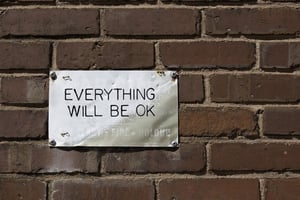How do you get your sustainability story out there?
How do you get your sustainability story out there?
How do you make them believable?
And how do you avoid being accused of greenwashing?
These are just some examples of the questions brands face around telling sustainable and ESG (Environmental, Social and Governance) stories as they seek to show the difference they make to the environment. And that they care about the communities where they operate and those that work for and with them.
This is a problem because there is an ever-growing interest in sustainability.
Customers, potential customers, partners, employees and investors want to align themselves with brands willing to discuss and tackle environmental and social issues and try to improve an ever-changing world.
To help answer some of the questions surrounding the subject, the latest masterclass for members of The Media Team Academy looked at all things ESG.
The session was led by Tom Idle, a journalist and podcaster specialising in sustainability.
Tom shared his thoughts on the emerging trends in ESG storytelling.
He also offered 10 tips to help tell better sustainability stories. And we thought we would share them in our media training blog:
1 Be bold
Telling sustainable stories involves some bravery.
This means telling people about what you have already achieved. And being open and transparent about what you need to improve.
“Often I work with businesses who are too fearful of talking about sustainability because it is not backed up by a robust corporate strategy,” Tom said.
“But you must be bold and confident in discussing what you have achieved.
“Of course, there are accusations of greenwashing everywhere. The way around that is to acknowledge any limitations and explain what is yet still to come.
“That way your stories will stack up and gain momentum.”
To highlight the point about limitations, Tom mentioned criticism HSBC received for a press release about its net-zero ambitions but that didn’t offer a timeline for reducing its financing of coal, oil and gas projects before 2050.
2 Be consistent
You don’t need us to tell you that consistency is crucial to any corporate comms strategy.
But it has even greater importance with ESG storytelling.
Tom said: “You have to get your story straight and ensure you are using the right metrics all of the time.
“And you need to anchor your stories by referencing the overarching corporate strategy, vision or mission.”
3 Be clear
We often stress the importance of clarity and avoiding jargon during our media training and presentation skills courses.
And this is vital in sustainability storytelling, where criticism often includes complaints about the vagueness of what is discussed and accusations of ‘greenwashing’.
“The reason sustainability communication differs from communicating stories about anything else is that people are ready and waiting to bash it over the head and dismiss it as being non-essential or a nice-to-have,” Tom said.
“Earlier this year, a Unilever investor criticised the CEO for talking about sustainability too much rather than core business issues.
“So, the overuse of jargon and acronyms that tend to dominate sustainability and ESG stories must be avoided. Be really clear.”
To illustrate his point, Tom used the example of Quorn and its ‘Thai style wonder grains’ product, launched in 2020.
He said: “When they launched it, they created a series of stories that suggested this little lunch pot was a way of addressing climate change. It said that the product ‘helps us reduce our carbon footprint’.
“It didn’t make clear who they meant by ‘us’. They actually meant themselves rather than the people eating the lunch pot. The Advertising Standards Agency got involved, ruled that it was misleading and said that because it was new, it was impossible to say whether it would reduce Quorn’s carbon footprint.
“So, be clear and don’t try to win quick sustainability PR bucks.”
4 Be strategic
How do you know if you have a sustainability story worth telling?
“The best way is to check whether it is aligned to what your company wants to say and do,” Tom said.
“Ultimately, it is about your audience and talking to your customers and stakeholders to help them overcome challenges and think differently about subjects you know they would expect you to have the answer to."
5 Be relevant
This is connected to the last point and fits in with something we regularly discuss during our media training.
Tom said: “Does it make sense for your business to be talking about ocean plastic waste?
“There are plenty of examples where you get someone senior in the business who has an issue they want to talk about rather than what is relevant.
“If you are a consumer goods business, you are potentially using lots of single-use plastic. Does it make sense to talk about that as an issue? Or to talk about saving rainforests?
“It might be right to talk about both those issues. But you need to get the balance right.
“I’ve worked with Sky for many years, and they decided some time ago to shift their ESG storytelling away from rainforests to the ocean and plastic waste.
“Quite rightly, the company felt it had more to say on plastics than it did on anything else, given they use so much of it in their products and packaging,
“It felt much more connected to their core business.”
6 Be self-aware
This is about understanding who you are as a business and what you stand for.
What do you believe in? Why do you exist?
“Unless this work has been done, it is harder to tell ESG stories because everything can feel a bit disjointed and unnatural,” Tom said.
“That confidence and assuredness in storytelling only come when you have worked out your place in the world.”
7 Be open
We’ve touched on this already, but it is crucial not to leave gaps in your ESG narrative and storytelling.
Transparency can come from what you don’t say as much as what you do say.
“Think about the questions you could get asked by a journalist on any of these stories,” Tom said. “And try to fill in the gaps because, if you don’t, someone else will.
“It won’t just be the media trying to catch you out. It could be your customers, investors and shareholders who make assumptions about what you are doing.”
8 Be direct
It is vital to remember that people want different things from the communication they receive, in terms of language, the stories covered, and what they are asked to do.
Tom said: “Not everyone appreciates stories and messages that on the surface are not directly linked to revenue and sales.
“So, it is vital to think about your audience and spell out the sales and revenue connection, if you need to do that.”
9 Be smart
Consumers are evolving, and there is growing awareness of environmental and social issues.
This requires you to think a bit differently about what you tell them and what you focus on.
“Your audience is smart – smarter than you think,” Tom said.
“What they don’t want is for you to tell them something is sustainable. They can work that out themselves.
“Instead, focus on the benefits, value and how sexy or cool something is instead.
“That’s where you should focus your storytelling efforts.”
10 Be emotional
Last but not least is emotion.
Emotion is a crucial part of effective communication. And it is pivotal ESG stories trigger emotion.
“We are in the emotion business as storytellers and communicators,” Tom said.
“There is a reason ESG issues maintain their position in our consciousness and on political and business radars. And that is because we are talking about human rights, fair pay, diversity, plastic waste in the ocean, and poor air quality giving kids asthma at five.
“All these things are about human connection and the connection between ourselves and the natural environment.
“The other thing that I think is sometimes lost in corporate communications is that businesses should not be faceless entities. Businesses are a group of people all making decisions and working together and creating things people want. We should not lose sight of that.
“So, feed our emotions and talk to the heart as well as the head. That way you have a good chance of breaking through and making sure the stories you are telling land with your audience,
“My favourite example in ESG storytelling is a company called Just Egg, which makes eggs from plants. Their messages talk about saving the planet and making people healthier. But they also talk to your emotions.”
During this exclusive session for members of The Media Team Academy, Tom also used his near 20 years of experience as a journalist covering sustainability to highlight the emerging ESG storytelling trends you need to know.
If you want to be part of masterclasses like this with our current working journalist tutors, and ones with the expert personal development and leadership coaches from The BCF Group, you need to be a member of The Media Team Academy.
The next cohort of the learning and development programme starts in October. But if you sign up now, we will activate your membership early – giving you extra time to enjoy the masterclasses, on-demand courses and exclusive resource hub.
Media First are media and communications training specialists with over 35 years of experience. We have a team of trainers, each with decades of experience working as journalists, presenters, communications coaches and media trainers.
Click here to learn more about our crisis communication training.
Subscribe here to be among the first to receive our blogs.




